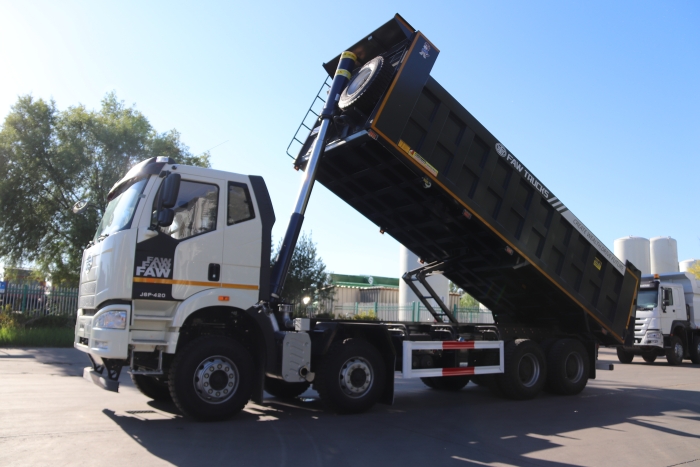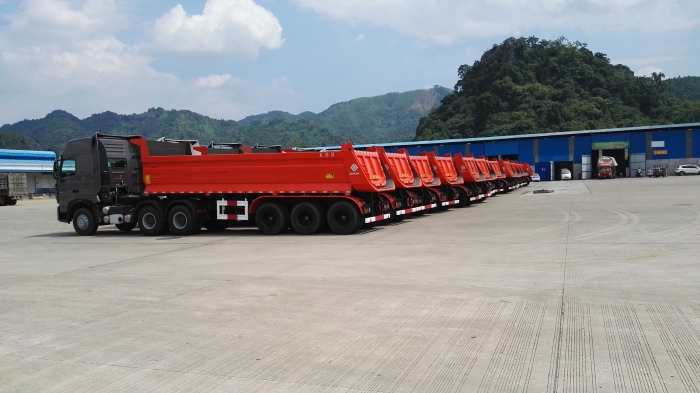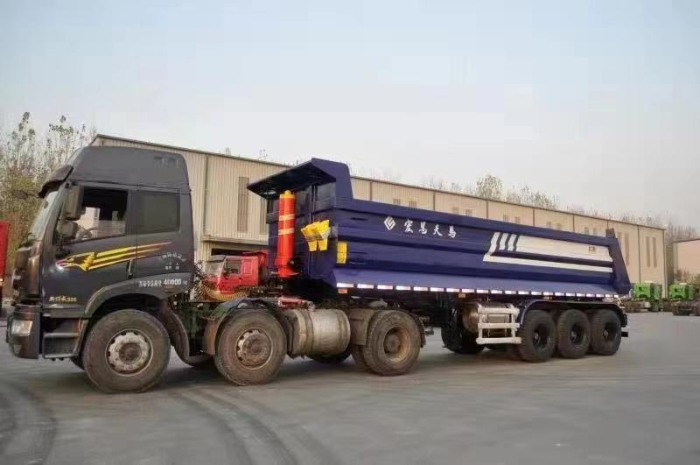- PRODUCTS
- SOLUTION
- SERVICE
- NEWS
- ABOUT US
The key features of a 19m semi-trailer include robust structural design, substantial cargo space, high engine power, advanced safety systems, and versatility across various industries.
Semi-trailers are a vital component in the global logistics and transportation sector, acting as pivotal tools for heavy-duty transport. Typically, they consist of a combination of a tractor unit and one or more semi-trailers to carry freight.The semi-trailer is connected to the tractor via a hitch called a hitch.
The focus on 19-meter semi-trailers stems from their unique balance of capacity and maneuverability. They are long enough to handle a significant amount of cargo, yet still maintain a level of agility that is crucial for navigating through varying road conditions and urban environments. This length is often seen as a sweet spot in maximizing transport efficiency while adhering to road safety and regulatory constraints.
In exploring the 19-meter semi-trailer, we delve into various aspects such as design features, performance parameters, applications, and cost-effectiveness. This examination provides insights into why this particular size of the semi-trailer is increasingly preferred in various transport sectors.

The structural design of a 19-meter semi-trailer is a blend of engineering precision and practical functionality. The main elements include:
Frame Structure: The backbone of any semi-trailer, the frame for a 19-meter model, is typically constructed from high-strength steel. This material choice ensures durability and the ability to withstand heavy loads. The design also includes cross members for added stability.
Tires and Suspension System: A critical aspect for any vehicle, especially for a semi-trailer of this size. The tire configuration usually involves multiple axles with dual or single tires. The suspension system is designed to provide stability and smooth transport of goods, often featuring air or mechanical suspensions to adapt to different loads and road conditions.
Maximizing space utilization and cargo capacity is crucial for the effectiveness of a 19-meter semi-trailer:
Cargo Space: These semi-trailers offer substantial cargo space, often exceeding 90 cubic meters. This space allows for the transportation of a wide range of goods, from bulk items to palletized cargo.
Load Capacity: The carrying capacity is a significant factor. A 19-meter semi-trailer can typically handle up to 24,000 kilograms, depending on the specific model and configuration. This capacity makes them ideal for transporting heavy and voluminous goods.
Each of these features plays a vital role in the overall functionality and efficiency of the 19-meter semi-trailer, making it a preferred choice for various transportation needs. The combination of robust structural design and optimized space and capacity ensures that these vehicles can meet the demanding requirements of modern logistics and freight transport.
The performance of a 19-meter semi-trailer is heavily influenced by its power and efficiency characteristics. Key aspects include:
Engine Power: Typically equipped with high-performance engines, these semi-trailers offer impressive horsepower, often ranging from 400 to 600 HP. This power is essential for transporting heavy loads over long distances.
Transmission System: The transmission plays a crucial role in managing the engine's power. Most 19-meter semi-trailers use advanced automatic or manual transmission systems, providing smooth shifting and optimal fuel efficiency.
Fuel Efficiency: Fuel consumption is a key factor in operating costs. The design of modern semi-trailers is more energy-saving. The fuel consumption of certain models of tractor heads is generally around 20-25 liters without load and around 30-35 liters with standard load.

Safety is paramount in the design and operation of 19-meter semi-trailers:
Braking System: They are typically equipped with advanced braking systems, such as anti-lock braking systems (ABS) and electronic braking systems (EBS), ensuring quick and safe stopping even under heavy loads.
Stability: Features like Electronic Stability Control (ESC) and roll stability support (RSS) enhance the vehicle's stability, crucial for preventing accidents, especially when navigating turns or in adverse weather conditions.
Safety Measures: Other safety measures include reflective markings for better visibility, robust guardrails, and emergency braking signals.
These performance parameters demonstrate the balance between power, efficiency, and safety in 19-meter semi-trailers, making them reliable and cost-effective options for transportation needs. The advanced technological integration in these vehicles contributes significantly to their operational excellence and adherence to safety standards.
The versatility of 19-meter semi-trailers is evident in their wide range of applications and suitability for various types of cargo. Key aspects include:
General Cargo: These trailers are ideal for transporting non-perishable goods like electronics, textiles, and furniture. Their large size and robust design make them suitable for bulky items.
Specialized Cargo: Adaptability for specialized cargo is another strength. For instance, with modifications, they can transport temperature-sensitive goods, hazardous materials, or oversized equipment.
Flexibility in Loading: The design allows for both rear and side loading, offering flexibility based on the type of cargo and loading facilities.
Construction: In the construction industry, these semi-trailers are invaluable for transporting large quantities of materials like steel, lumber, and pre-fabricated components.
Logistics and Distribution: They are the backbone of logistics, providing efficient transport solutions for warehousing and distribution networks.
Agriculture: Useful in agriculture for transporting bulk produce, feed, and equipment over long distances.
Retail and E-Commerce: With e-commerce on the rise, these semi-trailers play a crucial role in the retail supply chain, moving goods from distribution centers to retail outlets or directly to consumers.
The application of 19-meter semi-trailers in these diverse industries highlights their versatility and efficiency. Their ability to adapt to different cargo types and serve various sectors makes them an indispensable asset in the world of transportation and logistics.

Understanding the financial implications of operating a 19-meter semi-trailer is essential for businesses. This analysis covers both the acquisition and operational aspects.
Initial Purchase Price: The cost of a new 19-meter semi-trailer varies, typically ranging from $50,000 to $120,000, depending on features and specifications.
Maintenance Costs: Regular maintenance is crucial for longevity and safety. Annual maintenance costs can range from $1,000 to $4,000.
Fuel Expenses: Fuel is a significant ongoing expense. Assuming an average fuel efficiency of 6-8 km/l and fluctuating fuel prices, annual fuel costs can be substantial.
Insurance Costs: Insurance premiums vary based on coverage, but average around $1,500 to $3,000 yearly.
ROI: The ROI is calculated considering the trailer's utility in terms of load capacity, fuel efficiency, and operational lifespan. A well-maintained 19-meter semi-trailer can offer a high ROI due to its efficiency and durability.
Lifespan: The average lifespan of these semi-trailers is around 10-15 years, depending on usage and maintenance.
Aspect | Detail | Estimate |
Purchase Price | Cost for a new semi-trailer | $50,000 - $120,000 |
Maintenance Costs | Annual maintenance expenses | $1,000 - $4,000 |
Fuel Expenses | Based on fuel efficiency and usage | Variable |
Insurance Costs | Annual premium | $1,500 - $3,000 |
ROI | Efficiency in operation and load capacity | High (depending on usage) |
Lifespan | Duration of operational effectiveness | 10-15 years |
This cost-benefit analysis shows that while the initial investment for a 19-meter semi-trailer is significant, its efficiency, versatility, and long lifespan can offer substantial financial returns over time. The key to maximizing these benefits lies in effective management and maintenance of the vehicle.